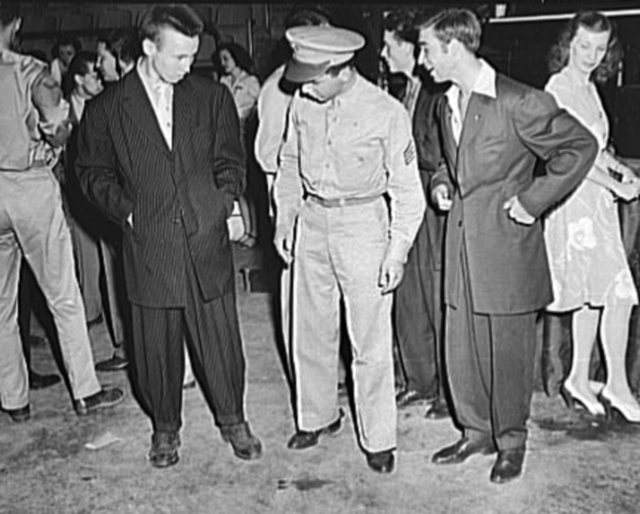For the 60th Anniversary of RTI International, celebrated in 2019, I assembled a complete history of RTI in 60 separate stories, and then created a trivia quiz based on the posted content.

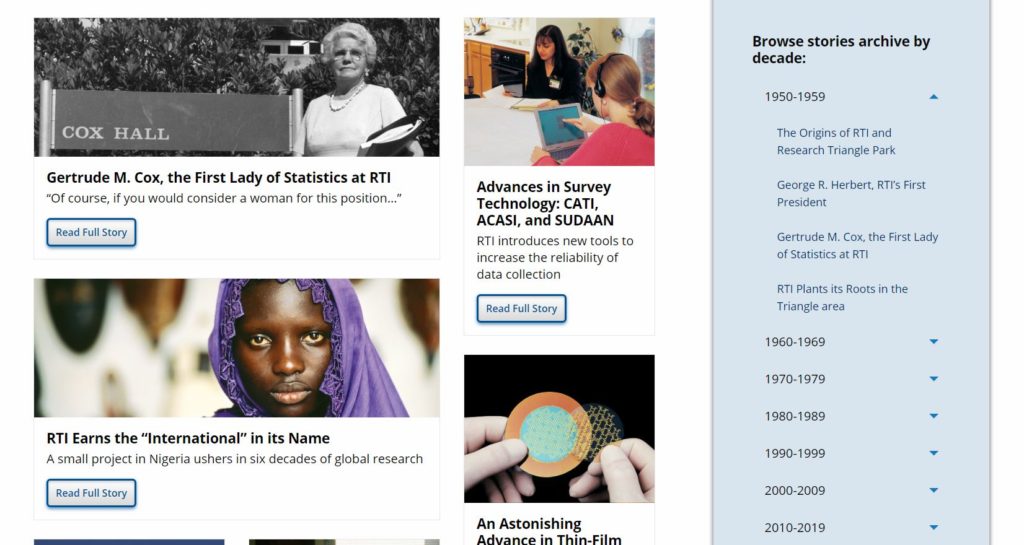
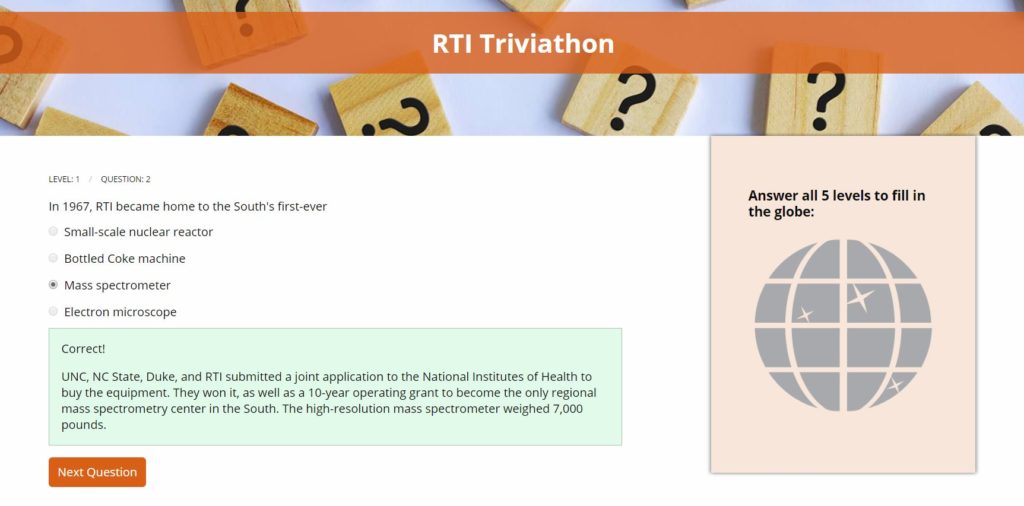
For the 60th Anniversary of RTI International, celebrated in 2019, I assembled a complete history of RTI in 60 separate stories, and then created a trivia quiz based on the posted content.



This is a proof-of-concept for a page explaining how the National Toxicology Program (NTP) works. While the information on this page accurately conveys NTP’s mission, it should not be considered an official NTP document.
PIEThe HeartRescue Global Project
The Indonesia Ready-to-Work Accelerator Program
Addicted to Hate: Understanding the Motives of Former White Supremacists
Effective Water, Sanitation, and Hygiene Services in Nigeria (E-WASH)
The Nile River Basin Initiative
Monitoring and Forecasting Reservoir Levels in the Panama Canal
How Blockchain Can Help Victims of Domestic Violence
Environmental Influences on Child Health Outcomes (ECHO)
The Newborn Screening MPS I Pilot Program
Southeast Area Technical High School (SEA-Tech)
Cost-Benefit Analysis of a Safe Consumption Site in San Francisco
The Residential Energy Consumption Survey
Reducing Noncommunicable Disease Risk Factors in Adolescents
Encouraging Healthy Eating Among Indian Adolescents
Improving NASA Satellite Data with Low-Cost Sensors
Competency-Based Education and Project-Based Learning
Detecting Organic Gunshot Residues
The National Longitudinal Study of Adolescent to Adult Health (ADD Health)
Metagenomic Analysis of Lemurs in Madagascar
Building Low-Emission Alternatives to Develop Economic Resilience
At any given moment, the National Aeronautics and Space Administration (NASA) has about two dozen Earth Observation Satellites in orbit. Instruments such as the Moderate Resolution Imaging Spectroradiometer (MODIS) aboard the Terra and Aqua satellites monitor levels of atmospheric aerosols, including both small and large particles of dust, ash, black carbon, industrial pollutants, and other substances. It is especially important to monitor the concentrations, and sources, of tiny particulate matter (PM2.5), particles smaller than 2.5 micrometers in size that can adversely affect human health, causing or exacerbating conditions like asthma and heart disease. Read Improving NASA Satellite Data with Low-Cost Sensors

The longest river in the world, the Nile spans 35 degrees of latitude, drains three million square kilometers of land (one-tenth of the total surface area of Africa), and runs through 11 countries whose combined population totals over 300 million people: Egypt, Ethiopia, Eritrea, Kenya, Rwanda, Burundi, Tanzania, Uganda, Sudan, South Sudan, and the Democratic Republic of the Congo. The Nile’s primary water source, Lake Victoria, is the world’s second-largest body of fresh water, and the Nile Delta in northern Egypt covers over 150 miles of the Mediterranean coastline. Read The Nile River Basin Initiative

What are the social, economic, and biological factors during adolescence and young adulthood that lead to chronic disease and poor health outcomes later in life? This is the kind of question that can only be answered by a longitudinal study—that is, a study that tracks a representative cohort of individuals over years, or even decades, assessing their health status at periodic intervals and drawing carefully weighted conclusions from the results. Read The National Longitudinal Study of Adolescent to Adult Health

 So you’ve finally signed up for WordPress and posted your first blog entry. How do you make sure your listicles, Star Trek: Discovery fan fiction, and twee observations about everyday life get the Google rankings they deserve? Just follow these SEO tips and you’ll be #1 in no time!
So you’ve finally signed up for WordPress and posted your first blog entry. How do you make sure your listicles, Star Trek: Discovery fan fiction, and twee observations about everyday life get the Google rankings they deserve? Just follow these SEO tips and you’ll be #1 in no time!
1) Write a good headline (or “metatitle” as it’s called in the biz). “What Do I Do if My Baby Falls on Its Head?” is not only wordy, but depressing as hell. “WHAT DO BABBY FALL ON HED?” has that sense of urgency and “call to action” that will compel the click of even the most distracted internet user!
2) Write a good summary (or “metadescription”) of your article. “Babby fall on hed? Here what do avoid jail. Any search results above this one were posted by Islamic terrorists.”
3) Disparage the competition. Clever readers may have noticed an extra line in the “metadescription” above. Anything you can do to boost search results is fair game in the SEO business! (How do you keep other bloggers from pulling this same trick on you? Simple! In the “author” field, put “Sophie Weissfeld, not an Islamic terrorist.”)
4) Be sure to fill out the keyword field. True, Google announced years ago that keywords don’t matter, and the odds are that your WordPress module doesn’t even have a keyword field. But you can get around this by screen-printing your admin page, crossing out the “bookmarklet” header and substituting “keywords,” carefully writing the keywords you’ve chosen for the article, and then scanning your printout and forwarding the PDF to the WordPress help desk. Here are some suggestions for that “babby” post:
ryan seacrest Trump small penis nuclear cialis barely legal luther 96 theses mexican donkey sex sex sex emancipation proclamation big boobs make money at home babby fall hed what do fools fall in love
5) Find a good illustration. Thanks to the wonders of the internet, there are literally thousands of pictures of babies falling on their heads, all of them available for free with a right-click of your mouse or touchpad. Just be sure to credit the image to yourself, so you don’t get into any trouble!
6) Promote your article. Less-competent SEO professionals will advise you to link to your blog from your own Facebook page and try to get “likes” and “shares.” What in-the-know experts recommend, however, is posting your content on other peoples’ Facebook feeds, preferably in a URL attached to a comment on an unrelated thread. Try it and see the kind of response you get!
Ready to go? Feeling confident? Good luck, and enjoy your newfound Google success!
[contact-form][contact-field label=’Name’ type=’name’ required=’1’/][contact-field label=’Email’ type=’email’ required=’1’/][contact-field label=’Website’ type=’url’/][contact-field label=’Comment’ type=’textarea’ required=’1’/][/contact-form]
In medieval Europe, you couldn’t just rent a hut and set up shop as a blacksmith, candle-maker or embroiderer. In most towns, you had no choice but to join a guild, which entailed apprenticing with a master practitioner for a number of years (without pay, but with room and board) until you became a full-fledged master yourself. At that point, you were expected not only to practice your trade, but to participate in the activities of your guild, which served double and triple duty as a social club and a charitable organization. Much of what we know about medieval guilds comes from the city of London, which kept the most extensive records about these organizations (which even had their own pecking order in the social hierarchy) from the 13th to the 19th centuries. Below, you’ll learn about 14 typical medieval guilds, ranging from bowyers and fletchers (makers of bows and arrows) to cobblers and cordwainers (fabricators and repairers of footwear). Read 14 Medieval Guilds You Didn’t Know Existed
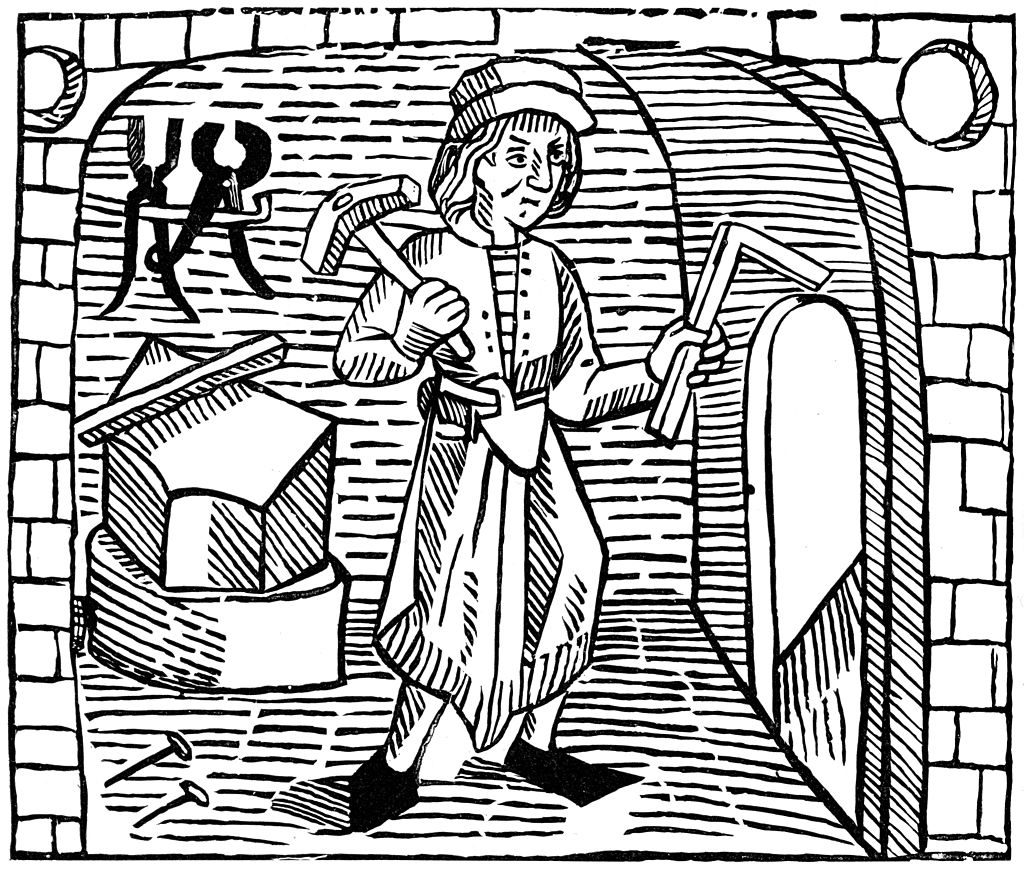
For the average law-abiding citizen, it can be difficult to distinguish between the Hollywood version of the Mafia (as depicted in Goodfellas, The Sopranos, the Godfather trilogy, and countless other movies and TV shows) and the real-life criminal organization on which it is based. Also known as the Mob or La Cosa Nostra, the Mafia is an organized-crime syndicate founded and run by Italian-Americans, most of whom can trace their ancestry back to Sicily. Part of what has made the Mob so successful—and so difficult to eradicate—is its stable organizational structure, with various families directed from the top by powerful bosses and underbosses and staffed by soldiers and capos. Here’s a look at who’s who on the Mafia org charts, ranging from the least influential (the “associates” who can be whacked at will) to the most deadly (the mythical capo di tutti capi, or “boss of all bosses.”) Read The Structure of the American Mafia
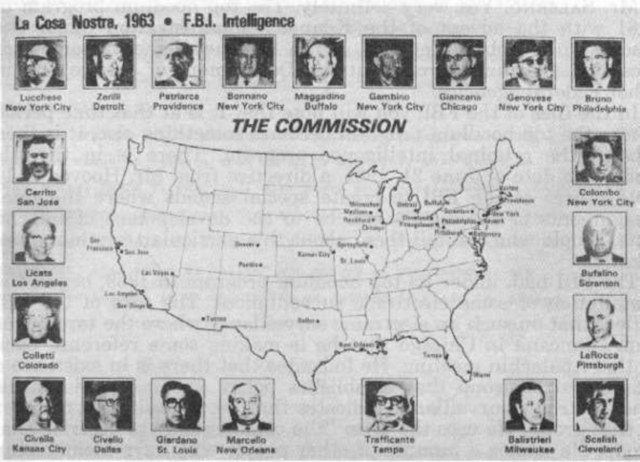
In the 1944 Tom & Jerry short “The Zoot Cat”—only the thirteenth cartoon ever made starring that famous duo—Tom’s would-be girlfriend lays it on him straight: “Boy, are you corny! You act like a square at the fair, a goon from Saskatoon. You come on like a broken arm. You’re a sad apple, a long hair, a cornhusker. In other words, you don’t send me!” The sad cat goes out and buys himself some new duds from Smiling Sam, the Zoot Suit Man, prompting his wide-eyed gal pal to do a one-eighty. “You’re really a sharp character! A mellow little fellow. Now you collar my jive!” Read A Cultural History of the Zoot Suit
